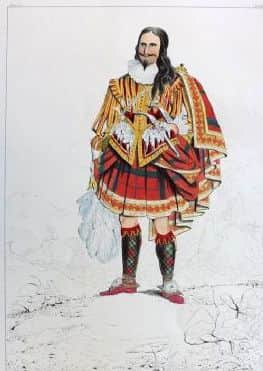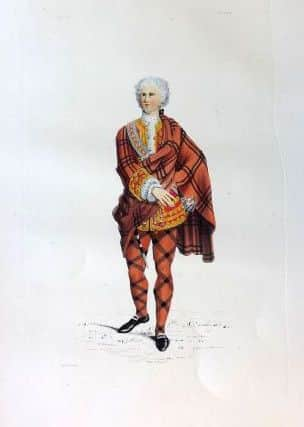The Welsh brothers who sold Scotland's '˜fake' tartan dream


John and Charles Allen were the sons of a wealthy naval officer who became entranced with Scottish culture and identity in the early 1800s.
They were to become highly influential in Scottish cultural life - publishing the first illustrated encyclopedia-type guide of Scottish tartan, with many of the designs later deemed to be forged.
Advertisement
Hide AdAdvertisement
Hide AdIt was these same designs that were to be adopted by the Highland Society of London amid the growing societal clamour for all things Scottish in the 19th Century, with some of the designs going widely into circulation.


The late historian Hugh Trevor-Roper in his essay The Highland Tradition of Scotland, offers a stinging critique of the brothers, who he described as “two of the most elusive and seductive characters who have ever ridden the Celtic hobby horse.”
It is not quite clear why the brothers became so passionate about Scotland but some distant link to the Earls of Errol may have been at play.
The ‘charming and talented duo’ wrote poetry in the vein of Sir Walter Scott - who was later to become one of their fiercest doubters - and travelled to Edinburgh in 1822 for the visit of George IV.


There was perhaps no single occasion that sealed public fascination in post-Culloden Scotland more and the Allen brothers were well positioned to build on this growing appetite for a more sanitised version of Scotland, one of mountains, glens hunting - and tartan.
In his piece, which is included in The Invention of Tradition collection, Trevor-Roper recalls how the two set upon high society life, both at home and abroad, dressed “in all the extravagance of which the Highland costume is capable - every kind of tag and rag, false orders and tinsel ornaments.”
But their want to lay claim to Scottish noble life was not merely cosmetic. They claimed to be direct descendants of Bonnie Prince Charlie with the older brother changing his name to John Sobieski Stuart - after the Polish king who was the great grandfather of the Young Pretender - with the younger brother renaming himself as Charles Edward Stuart in direct homage to the Jacobite leader.


Advertisement
Hide AdAdvertisement
Hide AdThey gained the grant of an tiny island in the river Beauly in Invernesshire from Lord Lovat where they set up a “miniature court,” according to Trevor-Roper.
Trevor-Roper said: “They were known as ‘the Princes’, sat on thrones, maintained a rigorous etiquette and received royal honours from visitors, to whom they showed Stuart relics and hinted at mysterious documents in their locked charter desk.”
The brothers had long teased about owning a document which had been given to their father by Bonnie Prince Charlie himself.
The manuscript was called Vestiarium Scoticum - or the Garde-robe of Scotland - a depiction of clan tartans said to have been written by a knight in 1571, or possibly even earlier.


It was treated as an “authentic ancient authority” on Highland tartan and claimed that tartan were too worn by lowlanders.
It was published in 1842, a sumptuous edition and the first ever to contain colour illustrations of tartan. Two years later they published a bolstered version called The Costume of the Clans.
Trevor-Roper describes it as “intelligent and critical” but his assessment is, overall, grim.
Advertisement
Hide AdAdvertisement
Hide AdHe said: “The book is shot through with pure fantasy and bare-faced forgery. Literally ghosts are gravely called in evidence as authorities. The poems of Ossian are used as a source and elusive manuscripts are cited.”
It was not long after publication that a “devastating exposure” of the royal claims made by the two brothers was printed in the Quarterly Review with the pair disappearing to Prague and Pressburg for the next 20 years.
But the work of the brothers lived on. The “spurious clan tartans” were picked up by the Highland Society of London - with Trevor-Roper claiming they “became the means of the continuing prosperity of the Scottish tartan industry.”
Brian Wilton MBE, of the Scottish Tartans Authority, aid that the Sobieski brothers had a “huge input” to the heritage of tartan - and argued that their role had been “very beneficial”.
“What you have to remember is that respectability in a tartan comes with age. What was a brand new tartan then will now be looked back upon as a revered piece of tartan heritage.
“The Sobieski brothers were talented forgers and fantasists.
“It is very difficult to make a distinction between which tartans they used in the book were invention and which were authentic.
Advertisement
Hide AdAdvertisement
Hide Ad“But tartan is an every evolving art form. Around 150 new tartans are designed every year and in 150 years time, we will look at them in the same way we look at one of the Sobieski tartans.”
DOWNLOAD THE SCOTSMAN APP ON ITUNES OR GOOGLE PLAY
